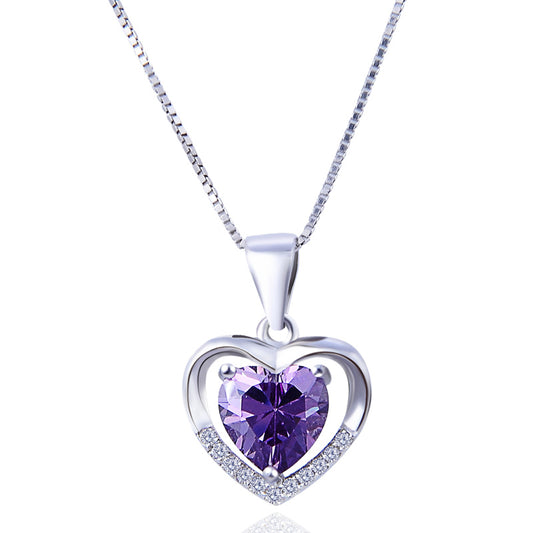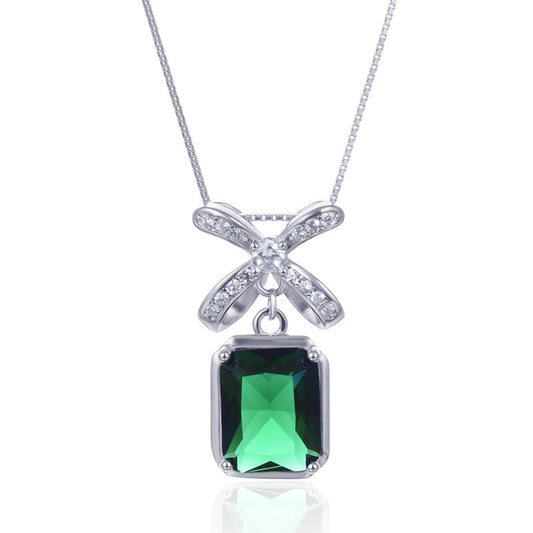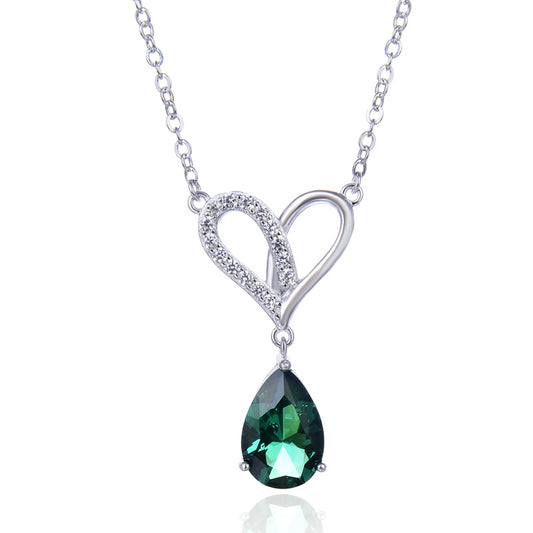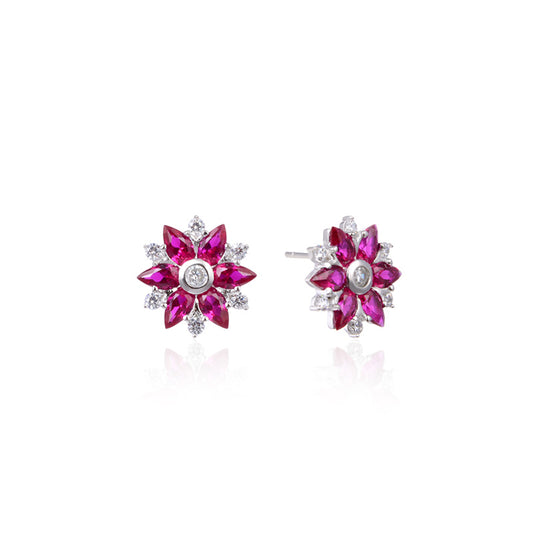The Complete Guide to 925 Marking on Jewelry
When shopping for jewelry, you may have noticed a small stamp or engraving that reads "925". This marking, known as the 925 marking, indicates the purity of the silver used in the jewelry. Understanding this marking and what it represents is crucial for anyone interested in purchasing silver jewelry. In this comprehensive guide, we'll delve into the meaning of the 925 marking, its history, and everything you need to know about it when shopping for jewelry.
What is 925 Marking on Jewelry?
The 925 marking on jewelry signifies that the piece is made of sterling silver. Sterling silver is an alloy of silver containing 92.5% pure silver and 7.5% other metals, usually copper. This combination enhances the durability and hardness of the silver while maintaining its beautiful luster.
Pure silver, or fine silver, is relatively soft and malleable, making it unsuitable for jewelry that needs to withstand daily wear and tear. Alloying it with other metals increases its hardness and durability, allowing it to hold its shape and resist scratching. The resulting metal, sterling silver, is an ideal material for jewelry making due to its beauty, durability, and affordability.
The 925 marking is a guarantee of the silver content in the jewelry. It assures the buyer that the piece contains at least 92.5% pure silver. This marking is typically found on the underside or inner surface of the jewelry, often accompanied by a maker's mark or other identifying stamps.
History of the 925 Marking
The use of silver in jewelry dates back thousands of years, with ancient civilizations such as the Egyptians, Greeks, and Romans prizing it for its beauty and malleability. However, the 925 marking as we know it today has a more recent history.
The 925 standard for sterling silver was established in the 19th century as a way to standardize and regulate the silver content in jewelry and other silverware. Before this, silver alloys of varying purity were used, leading to inconsistencies in quality and durability.
The 925 marking became widespread in the early 20th century, as it provided a way for consumers to identify the purity of the silver used in jewelry. Over time, it has become an internationally recognized symbol of quality, indicating that the jewelry meets a certain standard of silver content.
Why Choose 925 Sterling Silver Jewelry?
There are several reasons why 925 sterling silver jewelry is a popular choice:
- Affordability: Compared to gold or platinum, sterling silver is more affordable, making it accessible to a wider range of consumers.
- Durability: The addition of other metals to the silver alloy increases its hardness, allowing it to withstand daily wear and tear better than pure silver.
- Beauty: Sterling silver has a beautiful luster that complements a wide range of gemstones and designs.
- Hypoallergenic: Sterling silver is generally hypoallergenic, making it suitable for people with sensitive skin.
- Versatility: Sterling silver jewelry comes in a wide range of styles, from classic to contemporary, suitable for all ages and genders.
How to Identify 925 Sterling Silver Jewelry
Identifying 925 sterling silver jewelry is relatively straightforward. Here are some tips to help you:
- Look for the 925 Marking: As mentioned earlier, the 925 marking is typically found on the underside or inner surface of the jewelry. It may be stamped as "925," ".925," or "S925," all indicating that the jewelry is made of sterling silver.
- Check the Maker's Mark: In addition to the 925 marking, many pieces of sterling silver jewelry will also bear a maker's mark. This can be a logo, initials, or even a full name, indicating the manufacturer or designer of the jewelry.
- Magnetic Test: Silver is not magnetic, so if you have a magnet handy, you can use it to test the jewelry. If the magnet sticks to the jewelry, it's likely not silver. However, this test is not foolproof, as some other non-silver metals are also non-magnetic.
- Visual Inspection: Sterling silver has a distinctive luster and color. It tends to have a brighter, whiter appearance than other metals like steel or nickel. Over time, sterling silver may develop a patina, which is a natural oxidation process that gives the metal a unique, aged look.
- Professional Appraisal: If you're still unsure about the authenticity of the jewelry, you can seek a professional appraisal. A qualified jeweler or gemologist can accurately assess the purity and quality of the silver.
Caring for Your 925 Sterling Silver Jewelry
Proper care and maintenance are essential to keep your 925 sterling silver jewelry looking its best. Here are some tips to help you care for your jewelry:
- Store Properly: Keep your jewelry in a dry, airtight container when not in use. This helps prevent tarnishing and scratching.
- Avoid Exposure to Chemicals: Remove your jewelry before swimming, showering, or engaging in activities that expose it to chemicals like chlorine or bleach. These chemicals can damage the silver and cause it to tarnish more quickly.
- Clean Regularly: Use a soft cloth to gently wipe away dirt and oils from the surface of your jewelry. You can also use a mild silver cleaner specifically designed for sterling silver. Avoid using abrasive cleaners or cloths, as they can scratch the silver.
- Polish Occasionally: Over time, sterling silver may develop a patina or tarnish. You can use a silver polishing cloth or liquid silver polish to restore its luster. Follow the instructions on the product carefully to avoid damaging the silver.
- Inspect Regularly: Periodically inspect your jewelry for loose stones, bent prongs, or other damage. If you notice any issues, take it to a professional jeweler for repair.
Shopping for 925 Sterling Silver Jewelry
When shopping for 925 sterling silver jewelry, there are a few things to keep in mind:
- Buy from Reputable Sources: Purchase your jewelry from reputable dealers or manufacturers who provide authenticity certificates and guarantees. This ensures that you're getting what you pay for and that the jewelry meets the stated silver content.
- Check the Markings: As mentioned earlier, always look for the 925 marking on the jewelry to confirm its silver content. Additionally, check for any other markings that may indicate the manufacturer or designer.
- Consider the Design: Sterling silver jewelry comes in a wide range of designs, from classic to contemporary. Choose a style that complements your personal taste and wardrobe.
- Understand Pricing: The price of sterling silver jewelry can vary depending on the complexity of the design, the quality of the craftsmanship, and the addition of gemstones or other embellishments. Make sure you understand the pricing structure and what you're paying for.
- Ask Questions: If you have any doubts or concerns about the jewelry, don't hesitate to ask the salesperson or dealer for more information. They should be able to provide you with detailed answers about the silver content, manufacturing process, and any other relevant information.
Conclusion
The 925 marking on jewelry is a symbol of quality and assurance that the piece meets a certain standard of silver content. Understanding this marking and what it represents is crucial when shopping for sterling silver jewelry. By following the tips and guidelines provided in this guide, you can make an informed decision when purchasing your next piece of jewelry.
Whether you're looking for a timeless gift for a loved one or a special treat for yourself, 925 sterling silver jewelry is a classic and affordable choice. With proper care and maintenance, it can become a cherished heirloom that will last for generations.
So, the next time you're in the market for new jewelry, keep an eye out for the 925 marking and enjoy the beauty and durability of sterling silver!








